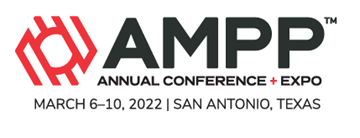Search
Corrosion Monitoring and Control
View as
Sort by
Display
per page
The Virtual Corrosion Engineer For Soil Side Corrosion Prediction And Cathodic Protection Status Monitoring
Product Number:
51322-17677-SG
Publication Date:
2022
$20.00
Thinning Of Inlet Piping To Reactor Effluent Air Condenser [REAC] Of Gas Oil Hydrotreating Unit - Case Study
Product Number:
51322-18007-SG
Publication Date:
2022
$20.00
TM0169-HD1994 Laboratory Corrosion Testing of Metals for the Process Industries
Product Number:
21200-HD1994
Publication Date:
1994
$179.00
TM0171-HD1995-SG Autoclave Corrosion Testing of Metals in High-Temperature Water-HD1995
Product Number:
21203-HD1995
Publication Date:
1995
$179.00
TM0177-1990, Laboratory Testing of Metals for Resistance to Sulfide Stress Cracking in H2S Environments
Product Number:
53040-HD1990
Publication Date:
1990
$179.00
TM0177-HD1996-SG Laboratory Testing of Metals for Resistance to Specific Forms of Environmental Cracking in H2S Environments-HD1996
Product Number:
21212-HD1996
ISBN:
1-57590-036-X
Publication Date:
1996
$179.00
TM0183--HD1993-SG Evaluation of Internal Plastic Coatings for Corrosion Control of Tubular Goods in an Aqueous Flowing Environment-HD1993
Product Number:
21213-HD1993
Publication Date:
1993
$179.00
TM0193-HD1993-SG Laboratory Corrosion Testing of Metals in Static Chemical Cleaning Solutions at Temperatures Below 93 °C (200 °F)-HD1993
Product Number:
21223-HD1993
Publication Date:
1993
$179.00
TM0194-HD1994-SG Field Monitoring of Bacterial Growth in Oilfield Systems-HD1994
Product Number:
21224-HD1994
Publication Date:
1994
$179.00
TM0197-HD1997- Laboratory Screening Test to Determine the Ability of Scale Inhibitors to Prevent the Precipitation of Barium Sulfate and/or Strontium Sulfate from Solution (for Oil and Gas Production Systems)-HD1997
Product Number:
21228-HD1997
ISBN:
1-57590-040-8
Publication Date:
1997
$179.00
TM0198-HD1998-SG Slow Strain Rate Test Method for Screening Corrosion-Resistant Alloys (CRAs) for Stress Corrosion Cracking in Sour Oilfield Service-HD1998
Product Number:
21232-HD1998
ISBN:
1-57590-051-3
Publication Date:
1998
$179.00
TM0274-1974, Dynamic Corrosion Testing of Metals in High Temperature Water
Product Number:
53022-HD1974
Publication Date:
1974
$179.00


![Thinning of Inlet Piping to Reactor Effluent Air Condenser [REAC] Of Gas Oil Hydrotreating Unit - Case Study Thinning of Inlet Piping to Reactor Effluent Air Condenser [REAC] Of Gas Oil Hydrotreating Unit - Case Study](https://nacestoreimages.blob.core.windows.net/images-thumbs/0088973_thinning-of-inlet-piping-to-reactor-effluent-air-condenser-reac-of-gas-oil-hydrotreating-unit-case-s_360.png)









